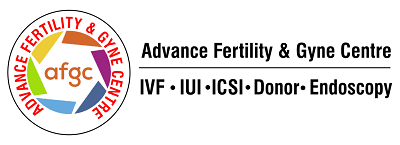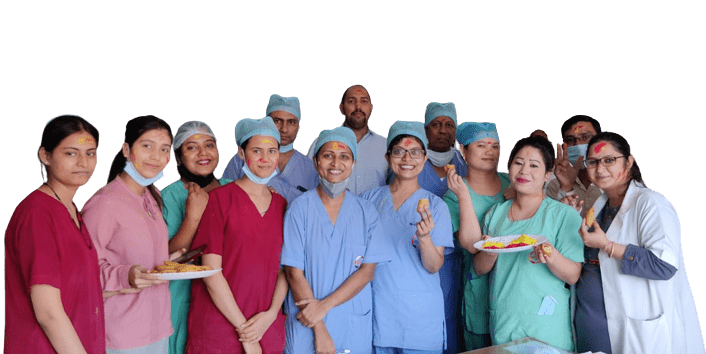Understanding the Steps in Your Fertility Journey
Starting Your Fertility Journey: Initial Consultation
The fertility journey begins with that first consultation — a conversation, really, between the couple and a fertility specialist. At this stage, the doctor asks about how long you’ve been trying (unprotected intercourse), the age of the woman, any known health issues, previous pregnancies or miscarriages, lifestyle and partner history. This first step is critical because fertility is not just about having sex — it’s about timing, regularity, partner health, and underlying biology. According to the World Health Organization (WHO), infertility is defined as the failure to achieve a pregnancy after 12 months or more of regular unprotected sexual intercourse. Cleveland Clinic+3World Health Organization+3PubMed+3 If the woman is older (for example over 35–40), many specialists recommend starting evaluation earlier (for instance after 6 months) because egg quality declines with age. Cleveland Clinic+1
In my view, this first consultation should clearly address: How long you have tried, your age (especially hers), whether this is primary infertility (never had a pregnancy) or secondary (had a pregnancy before) — knowing that distinction helps set timelines and expectations. NOW-fertility+1
Diagnostic Tests and Assessments in Your Fertility Journey
Once you’ve had a consultation, the next step is assessments for both partners — to understand what might be preventing conception. For the woman this means ovarian reserve tests (like AMH, antral follicle count, ultrasound), tubal patency tests, uterine and ovarian scans, hormone panels. For the man it means semen analysis, history of testicular issues, and other relevant tests. In my view the basic fertility tests always include: for women – egg reserve (AMH, AFC, age), tubal test, ultrasound; and for men – sperm test. Together these give a basic prognosis.
From a clinical perspective: one review states infertility is “the failure to establish a clinical pregnancy after 12 months of regular unprotected sexual intercourse” and notes that about 85% of couples have an identifiable cause (ovulatory dysfunction, tubal disease, male factor) while about 15% remain unexplained. PMC+1 The assessment must therefore cover both partners, not just the woman. Male factor contributes in about 50% of infertility cases. NCBI+1
During this phase, we check whether assessments have been done appropriately. For example: has the woman’s ovarian reserve been quantified? Have her tubes been evaluated? Has the man had a semen analysis? Are there modifiable lifestyle factors (smoking, weight, alcohol) in either partner? This is a key phase because without good assessment, the next treatment steps become guesses rather than guided decisions.
I often tell couples: “Think of this as gathering the evidence before planning the strategy.” If you skip or delay assessments, you may lose time — especially if age is working against you.
IVF and Assisted Conception Steps
Once assessment is done and you know where you stand (age, duration, cause), the journey moves into deciding what kind of treatment pathway suits you. This can range from continuing natural trying, using medication, moving to intrauterine insemination (IUI), then to assisted reproductive technologies (ART) such as In Vitro Fertilization (IVF), possibly with intracytoplasmic sperm injection (ICSI) or third-party reproduction (egg/sperm/embryo donation, surrogacy) depending on the cause and age.
For example, IVF is described as “the most common form of assisted reproductive technology” and is used when there are problems like tubal blockage, severe male factor, endometriosis, unexplained infertility, or advanced maternal age. NCBI+1
In my approach: the algorithm is something like this — couple tried for <12 months (woman <35, no major issues) → continue natural trying with lifestyle optimisation; tried >12 months (or woman older) and assessment shows mild issues → natural + medicine or IUI; assessment shows moderate or serious issues (low ovarian reserve, blocked tubes, severe male factor) or woman older (≥38–40) → go directly to IVF/ICSI or consider third-party reproduction. The key is tailoring to age, duration and cause.
This reflects a step-wise escalation: natural → medicines/timed intercourse → IUI → IVF/ICSI → donor/third-party. Each step depends on how the assessment has guided the prognosis.
Emotional and Lifestyle Support During Your Fertility Journey
The fertility journey is not just medical; it’s also emotional, physical and lifestyle-based. While you evaluate eggs, sperm, tubes and treatment options, you must also optimise your body and mind. This means healthy diet, moderate exercise, good sleep, stress management, avoiding smoking and excess alcohol. Lifestyle factors affect fertility in both partners and can improve outcomes. For example, WHO notes that lifestyle factors such as smoking, obesity and excessive alcohol intake are associated with higher infertility risk. World Health Organization+1
In my view: while you may be focused on “which treatment next”, don’t neglect “which life-habits now”. Emotional support is equally crucial — fertility treatment can be anxiety-provoking, and couples do better when they have support systems, counselling, clear communication and shared decision-making. It’s important to celebrate small milestones (like completing tests, starting a new cycle) to maintain morale.
Tracking Progress and Celebrating Milestones in Your Fertility Journey
Tracking progress means monitoring: time tried, assessment finished, test results in, treatment step decided, cycle started, embryo transfer done, pregnancy test, etc. It also means celebrating milestones: first consultation, completed test panel, semen report normalised, started IUI, completed first IVF cycle. These celebrations matter because the journey can feel long and heavy.
From the treatment algorithm point of view, tracking means reviewing after each step: did natural trying succeed in 3–6 cycles? If not, move to next step (medicine or IUI). Did IUI fail after X tries and woman is older or assessment showed poor reserve? Then move to IVF/ICSI. Did IVF/ICSI fail or prognosis is poor? Then discuss donor/third-party. The algorithm is age + duration + cause → guides when to escalate. According to a review: for women older than 38–40, immediate IVF may be considered rather than waiting through many IUI cycles. PMC+1
In my view this helps couples stay proactive rather than reactive. Set a timeline: e.g., “We will try timed intercourse for 6 months, then review.” Or “Because you are 39 and ovarian reserve is low, we recommend moving to IVF within 3 months.” You know what the next step will be. Celebrate when you move on: “We completed our first IUI cycle — that counts for progress.”
Final Thoughts
The fertility journey is a partnership — between you as a couple, your fertility centre, and your broader support network. It starts with assessment (duration, age, cause), then proceeds through appropriate treatment escalations (natural, medicine, IUI, IVF/ICSI, donor) based on a clear algorithm of age + duration + cause. Meanwhile, lifestyle optimisation and emotional resilience are equally vital. By tracking progress and marking milestones, the journey becomes manageable rather than overwhelming. In my opinion, the key is: do the assessment early, know your algorithm, stay proactive, optimise your habits, and celebrate each step. With clarity, you move from uncertainty to action — you may not control everything, but you control how you move forward.
References
- World Health Organization. Infertility: fact-sheet. 2023. World Health Organization
- Practice Committee Definition of Infertility: a committee opinion. 2023. ASRM
- Fertility and infertility: Definition and epidemiology. PMC, 2018. PubMed
- Evaluation and Treatment of Infertility: AAFP Review. 2015. American Academy of Family Physicians
- In vitro fertilization – Mayo Clinic overview. 2023. Mayo Clinic
- Review: Diagnosis and Management of Infertility. PMC, 2022. PMC
- Male Infertility – StatPearls. 2023. NCBI
NHS Conditions – Infertility. nhs.uk

